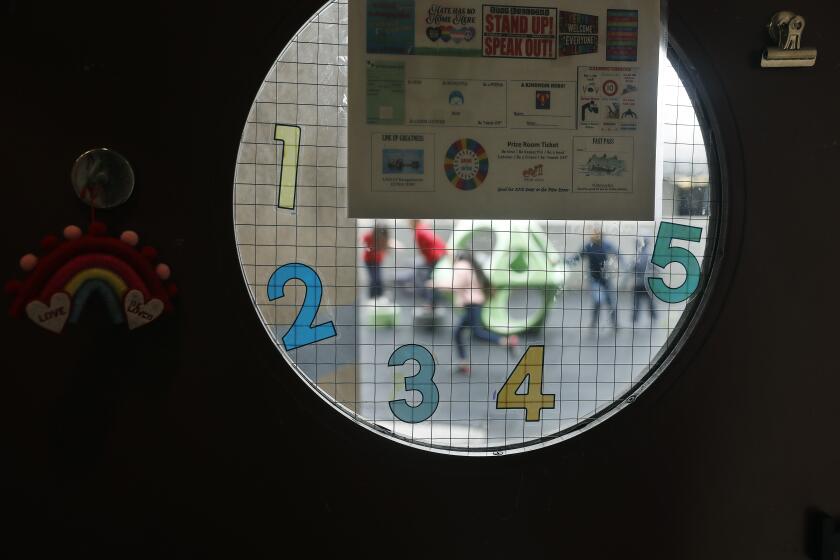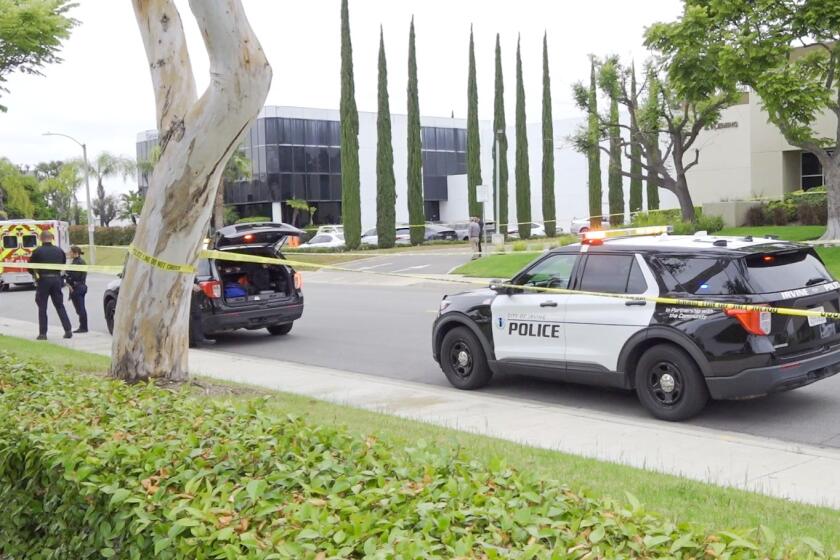Scandinavian Immigrants’ Tales in Song
The story of recent immigration to the United States, particularly of Central American and post-Vietnam War Asian refugees, is laced with feelings of political dissatisfaction. But, for descendants of 19th-Century Scandinavian immigrants, a century of successful assimilation has left them with feelings of warm nostalgia.
San Diego State University drama instructor Anne-Charlotte Harvey has made a kind of cottage industry out of singing the popular songs and broadside ballads of Swedish-American immigrants. With her guitar accompanist, Swedish folklorist Kjell Hansson, she will present a collage of immigrant songs and historical anecdotes in SDSU’s Don Powell Theatre tonight at 8.
Their program also salutes the Swedish-American community’s yearlong celebration of “New Sweden ‘88,” commemorating the 350th anniversary of New Sweden, the first North American settlement by Swedes in what is now Delaware.
“The songs favored by the immigrants were, in effect, little capsules of Swedish culture, preservers of ethnicity,” explained Harvey, who was born and raised in Sweden. “When I sing these songs in Stockholm, for instance, they are seen as sentimental--even corny. But, for audiences in this country, they strike a rich chord of nostalgia.”
Harvey’s performances sometimes elicit songs not found in the usual sources--old songbooks, folkloric archives, and the ethnic culture recordings made in New York and Chicago during the first two decades of this century.
“The last time I sang in Chicago, an old man came up after the concert and sang a crudely fashioned song I had never encountered. It was about the young immigrant women who fell into prostitution when they did not find the jobs they had been promised before leaving Sweden.”
Harvey noted that songs describing the darker side of the immigrant experience were rare, while songs describing the wealth to be found in America were typical.
“These were actually propaganda songs, describing how wonderful things would be in the new country,” Harvey said. “The steamship companies who made great profits taking emigrants to America would send their agents out into the provinces to drum up business. Their optimistic songs helped sell the dreams of the New World.”
Chicago was a destination of many Swedish immigrants a century ago. It was a New World metropolis that boasted a thriving Swedish press and many ethnic singing societies. One of the Chicago songs not only praised the city’s fabled elevated railroad and its stockyards, but added that everyone there was so prosperous that they smoked cigars.
“Most of the poor immigrants from rural Sweden were accustomed to using snuff, so the cigar was a real status symbol to the Swedish male of that time,” she noted.
Immigration was a relevant topic even as late as 1940, when it was celebrated in a Swedish musical called “Annie from America.” One of the songs, according to Harvey, is a parody sung in a quaint mixture of Swedish and English of George M. Cohan’s “Yankee Doodle Boy.”
Tonight’s program will also feature Norwegian-American violinist Paul Severtson, who has established a reputation for playing the Norwegian hardanger fiddle, a folk instrument found only in Scandinavia. He will accompany Harvey and Hansson on some of the songs, as well as play dance songs on his own.
More to Read
Start your day right
Sign up for Essential California for news, features and recommendations from the L.A. Times and beyond in your inbox six days a week.
You may occasionally receive promotional content from the Los Angeles Times.






